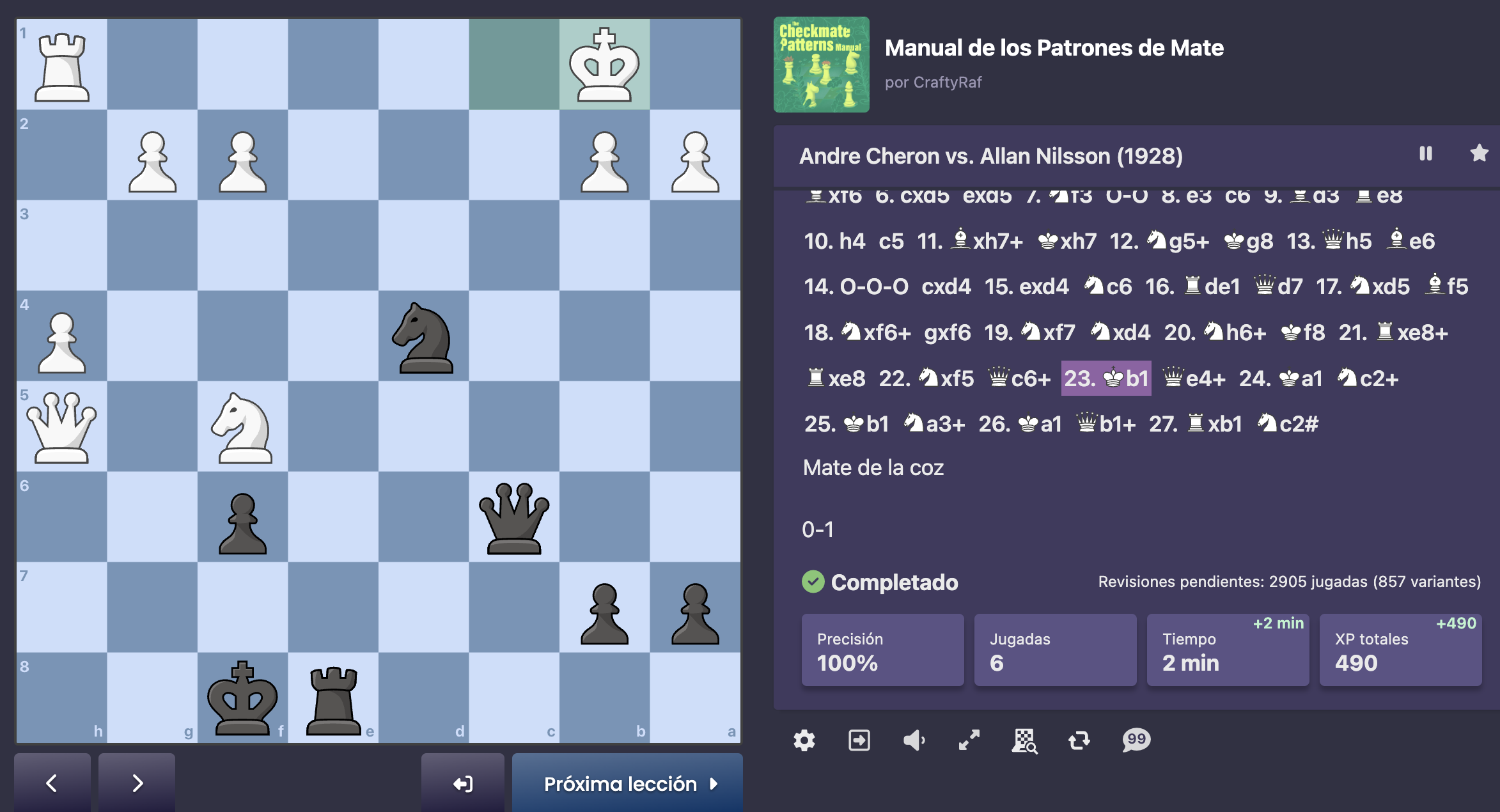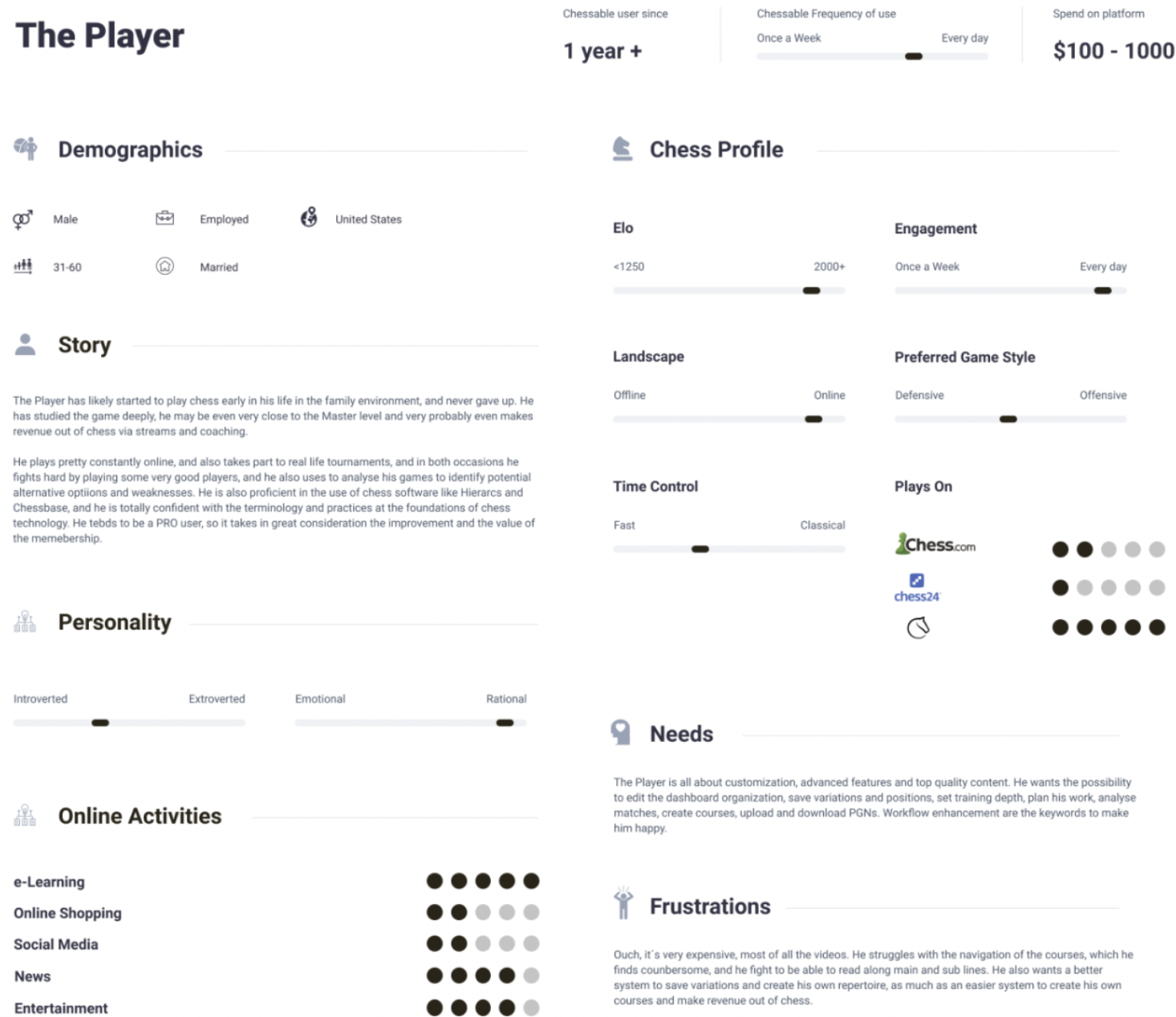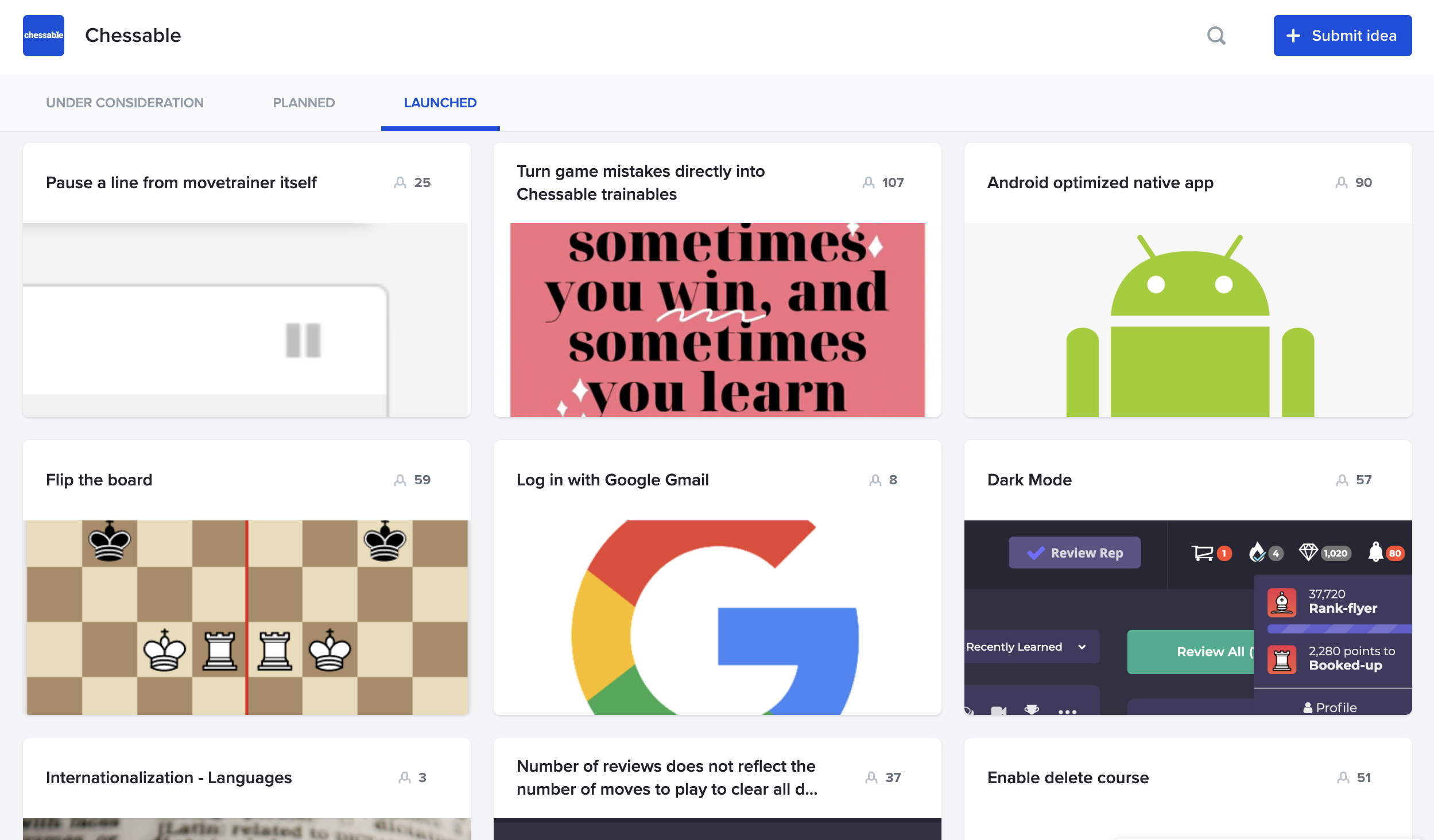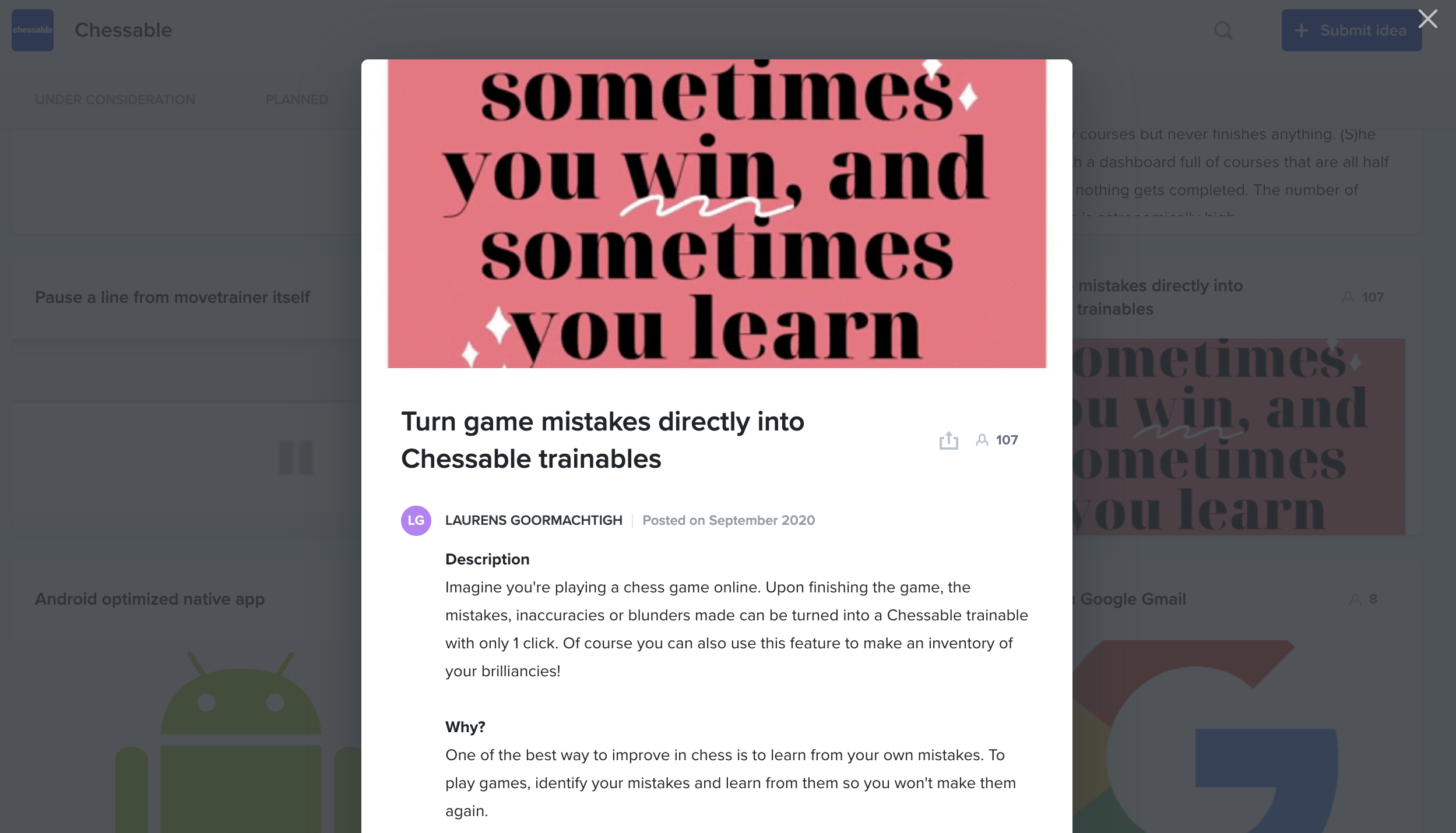About Chessable
Chessable is an online platform dedicated to chess learning.
It offers a variety of courses and training materials for chess players of all skill levels.
The platform utilizes a unique approach to learning chess, incorporating principles of spaced repetition and interactive training.
The visual representation below captures a tactical puzzle scenario. Upon successfully solving the puzzle, the user witnesses a boost in their XP points.
Leveraging positive reinforcement loops, users are motivated to revisit the platform, reinforcing their learned lessons.
The overarching goal is to foster continuous engagement, encouraging users to refine and enhance their pattern recognition skills over time.

Problem statement
Although the platform was gaining popularity and the course catalog was expanding rapidly (see the content creation case study), we heard the repeated feedback from users that the content is not always that relatable. With hundreds of courses and thousands of trainable variations available on the platform, it's understandable that most of the content is not very personalized to the user's needs. Moreover, it was repeatedly reported that users didn't always understand the real reasons why certain variations were suggested, despite the added commentary from the course authors. A lack of personalzation was a recurring theme in the user feedback and posed one of the main challenges for me as the product manager for the web platform.
My role
As the Product Manager at Chessable, I led the initiative to enhance customizability and improve user engagement on the platform. Collaborating closely with the product designer, we employed a user-centered design approach to thoroughly investigate the problem and identify key pain points and user needs. Early involvement of the tech lead ensured alignment across the cross-functional team and facilitated a shared understanding of both usability and feasibility. With a clear understanding of the primary problem, we ideated and implemented a solution to address it effectively.
Problem discovery
A well-defined problem identifies the target user persona and their specific needs.
To gather insights, we analyzed both qualitative and quantitative data.
The qualitative data and insights were derived mainly from the user interviews.
We conducted over 15 interviews to delve deeper into the users' pain points.
One of the outcomes of the interviews was to define different user personas.
In close collaboration with product design and research, I mapped out 3 key user personas: the beginner, the learner and the player.
The illustration below shows the outcome of the profile for the user persona 'The Player'.

Solution discovery
Now that the problem was well-defined and targeted towards a specific user persona, our next focus is on generating solutions. In the realm of chess software, each chess game is represented by a PGN (Portable Game Notation) file, with each position denoted by a FEN (Forsyth–Edwards Notation). AI-powered chess engines evaluate every position in the game, which means that each move alters the engine's evaluation of the position. A significant change in the chess engine's evaluation signals a mistake by one of the players. Leveraging this principle, we can easily identify the mistakes users make in their games. Converting these mistakes into trainable content for Chessable was straightforward, as our learning platform is built entirely around chess variations in the PGN format.
Prioritization
The next step is to prioritize this idea among the myriad of others on our public product board portal at Chessable (see here).

To accomplish this, I utilized the RICE framework, which evaluates ideas based on their Reach, Impact, Confidence, and Effort required for implementation. To gauge user desirability, we posted the idea on the product board portal and observed overwhelming support, with over a hundred votes, making it the most requested feature.

This indicates a potentially huge user impact. The reach would be moderate because the target user for this feature was 'The Player' persona which comprised only around 33% of our entire active user base. The confidence in our reach and impact estimates was rather high given the extensive user research conducted as well as the data-based evidence of the user problem. Additionally, this feature holds strategic significance as it facilitates connectivity with other platforms such as Lichess and Chess.com. Based on the high RICE score and the strategic importance of the feature, we decided to go ahead and build the feature after gaining alignment with all the stakeholders.
Outcomes
The main outcomes from the Chessable puzzle connect feature development are:
- The user interviews provided us invaluable insights leading to comprehensive profiles of our key user personas.
- The implementation of the 'Turn game mistakes into trainables' personalized learning feature resulted in a substantial improvement in customer retention rates. Specifically, we saw a 9% increase in customer retention (based on the standard retention curve for the 'The Player' user cohort) following the rollout of the new feature.
- By offering users personalized lessons that directly addressed their gameplay weaknesses, we were able to enhance engagement and foster a deeper connection with the platform.
Conclusion
This case study demonstrates the effectiveness of leveraging user-generated data to enhance personalized learning experiences. By understanding user needs and leveraging data-driven insights, Chessable was able to drive significant improvements in user engagement and retention, ultimately leading to a more successful and impactful platform.
Links